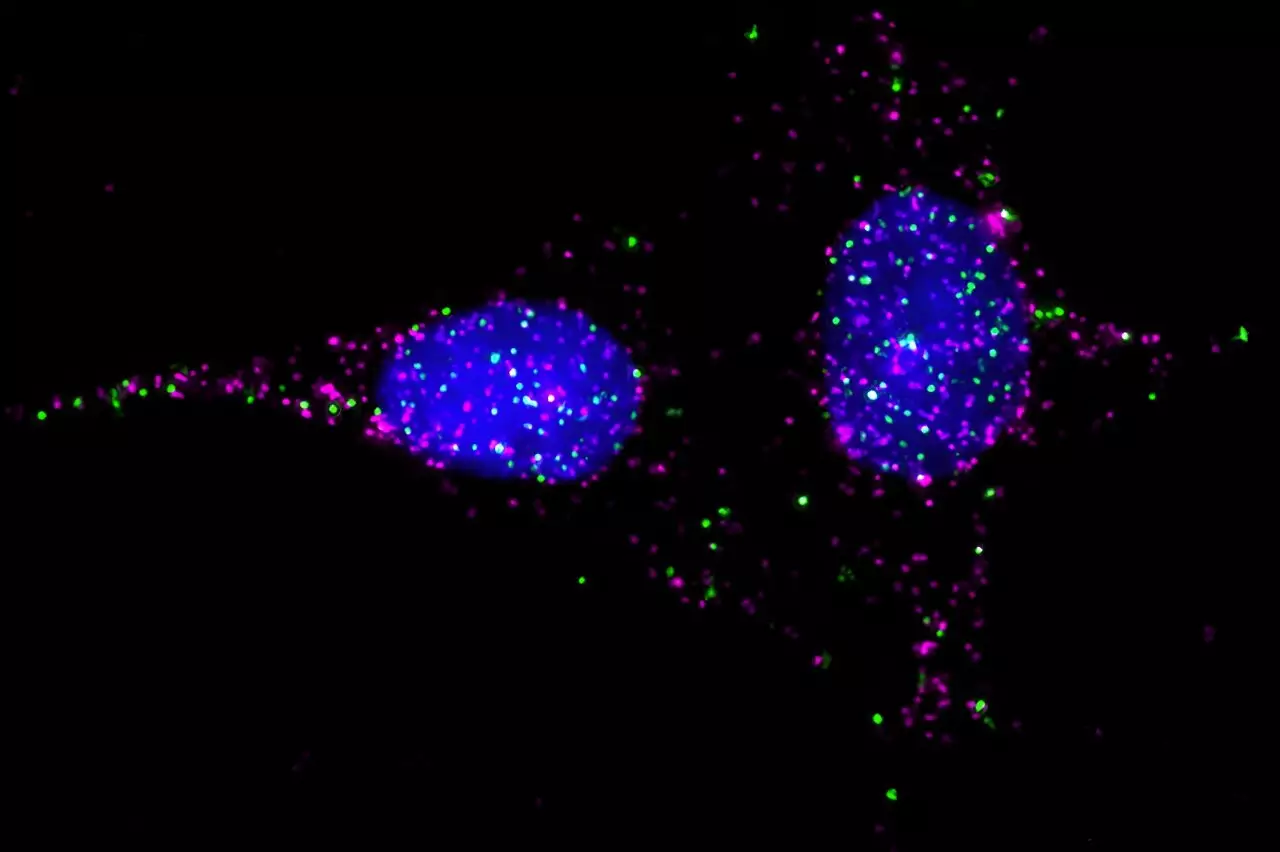G protein-coupled receptors (GPCRs) represent a critical class of proteins that play pivotal roles in cellular communication. These receptors are found on the surfaces of human cells and mediate numerous physiological processes, making them prime targets for therapeutic intervention. In fact, about one-third of all FDA-approved drugs interact with GPCRs, which are responsible for a wide range of biological functions—from regulating heart rate with beta blockers to modulating immune responses with antihistamines. However, a recent study has revealed a previously unrecognized layer of complexity associated with these receptors that could significantly broaden our understanding of their function and therapeutic potential.
While GPCRs themselves are crucial mediators of cell signaling, recent research highlights the indispensable role of receptor activity-modifying proteins (RAMPs). These proteins partner with GPCRs and are integral to their functional capabilities. Essentially, RAMPs assist in the proper transport of GPCRs to the cell surface and can drastically influence how these receptors transmit signals. This partnership often dictates not only the efficacy of a drug but also its expression levels in various tissues—a phenomenon that has profound implications in drug applications.
The metaphorical comparison of understanding a GPCR isolated from its RAMPs to enjoying a meal without knowing a restaurant’s operational details is quite apt. Much like how one cannot fully appreciate a culinary experience without awareness of the dining establishments’ intricacies, isolating GPCRs from their RAMP counterparts fails to provide a complete picture of their functionality.
To better understand the role of RAMPs in GPCR functionality, a collaborative effort among scientists, including Ilana Kotliar and Thomas Sakmar from Rockefeller University, has led to groundbreaking advancements in mapping the interactions between 215 GPCRs and their associated RAMPs. This considerable undertaking establishes a comprehensive framework to assess GPCR-RAMP interactions, thereby streamlining drug discovery processes.
To achieve this significant leap, the research team developed a sophisticated assay that harnesses existing technologies while utilizing a novel high-throughput approach. The strategy incorporated antibodies linked to magnetic beads, each dyed with one of 500 different colors, allowing researchers to monitor multiple GPCR-RAMP combinations simultaneously. This innovation facilitates efficient detection of interactions—enabling up to 500 experiments in a single procedural run—which transforms the landscape of GPCR research. The outcome is a wealth of data that not only clarifies known interactions but also uncovers previously hidden connections.
The ramifications of this research extend far beyond mere academic curiosity. With an augmented understanding of GPCR-RAMP interactions, pharmaceutical companies could potentially revamp their strategies for drug design, leading to enhanced specificity and efficacy. Many drug candidates exhibiting promising characteristics might have faltered in clinical settings due to underappreciated RAMP interactions. Thus, by encompassing these factors, drug development could be significantly accelerated, minimizing the trial-and-error approaches that often characterize this sector.
A crucial aspect of this study is its provision of online libraries containing valuable resources for researchers and drug developers alike. The new platforms facilitate the identification of which antibodies bind to specific GPCRs and whether those receptors interface with any RAMPs. This resource enables researchers to tailor experimental designs more effectively and improves the search for therapeutic agents targeting orphan GPCRs—receptors whose natural ligands remain undetermined.
Recognizing the multifaceted relationships among GPCRs and RAMPs opens the door to numerous research avenues that could illuminate the complexities of cellular signaling and disease pathology. The technique developed by this research team not only holds promise for identifying new drug interactions but also allows for exploring potentially harmful combinations of GPCRs and autoimmune responses.
As we stand on the precipice of a new era in drug discovery, the collaborative efforts to decode the interactions between GPCRs and RAMPs exemplify how innovative methodologies can yield transformative results. As more resources become available to researchers worldwide, the potential for novel drug therapies targeting these dynamic receptor systems will continue to grow—providing hope for addressing various health challenges prevalent in our society today. The future of medicine undoubtedly hinges on our ability to unravel these intricate biological relationships.


Leave a Reply